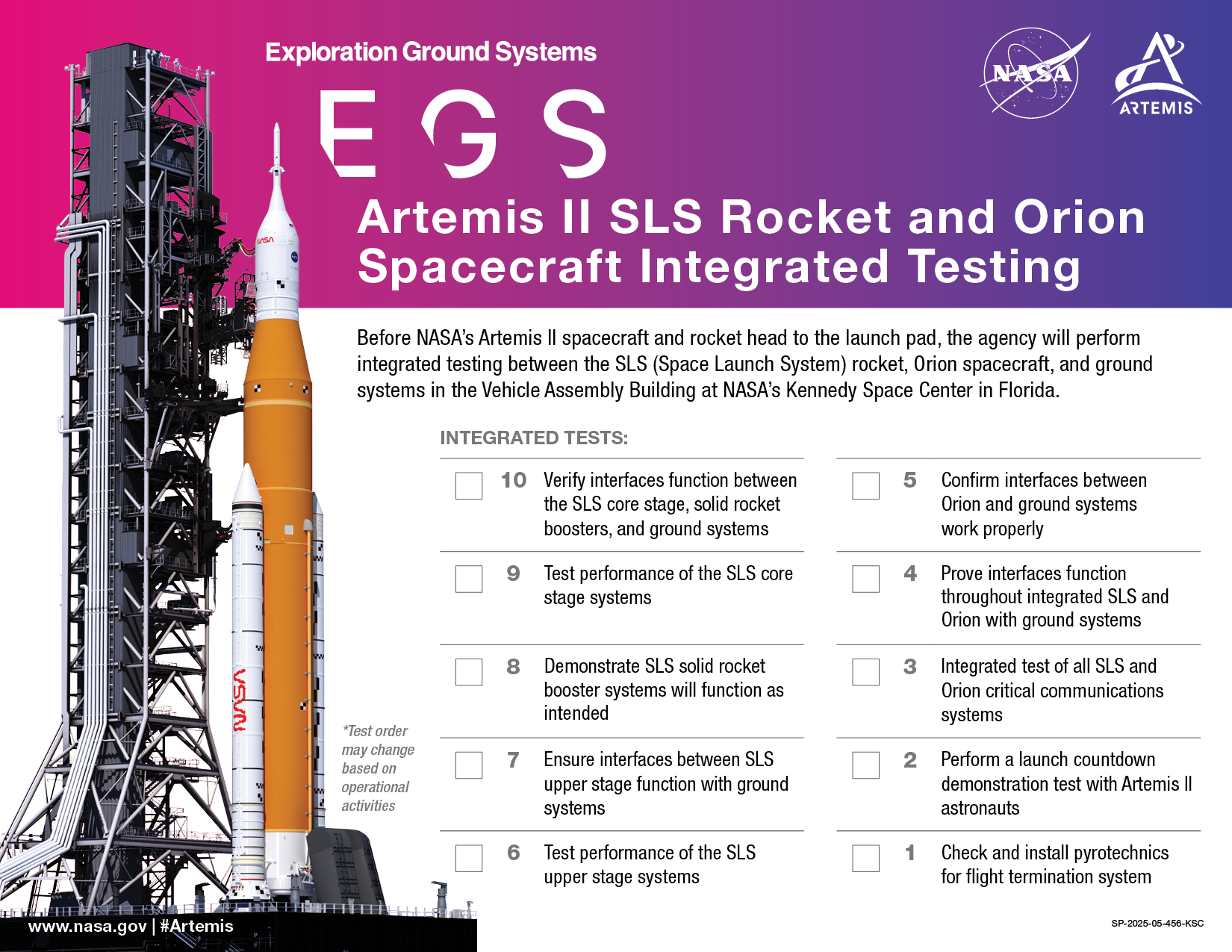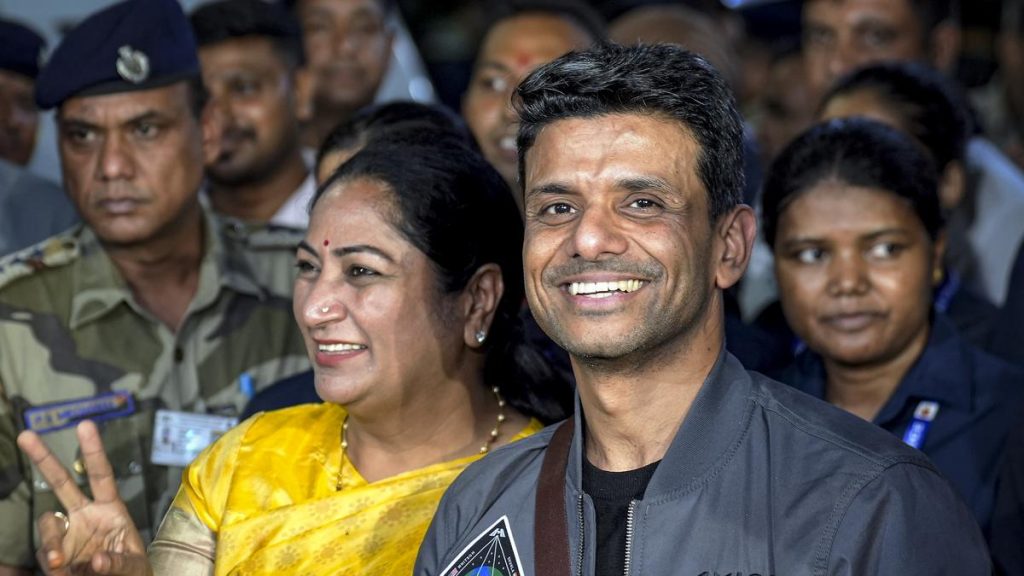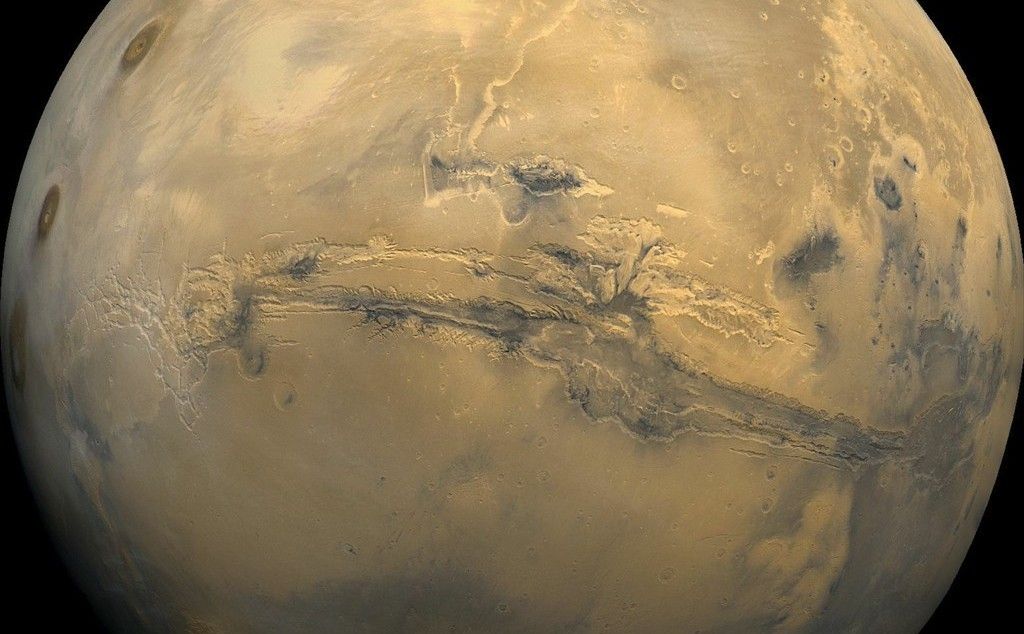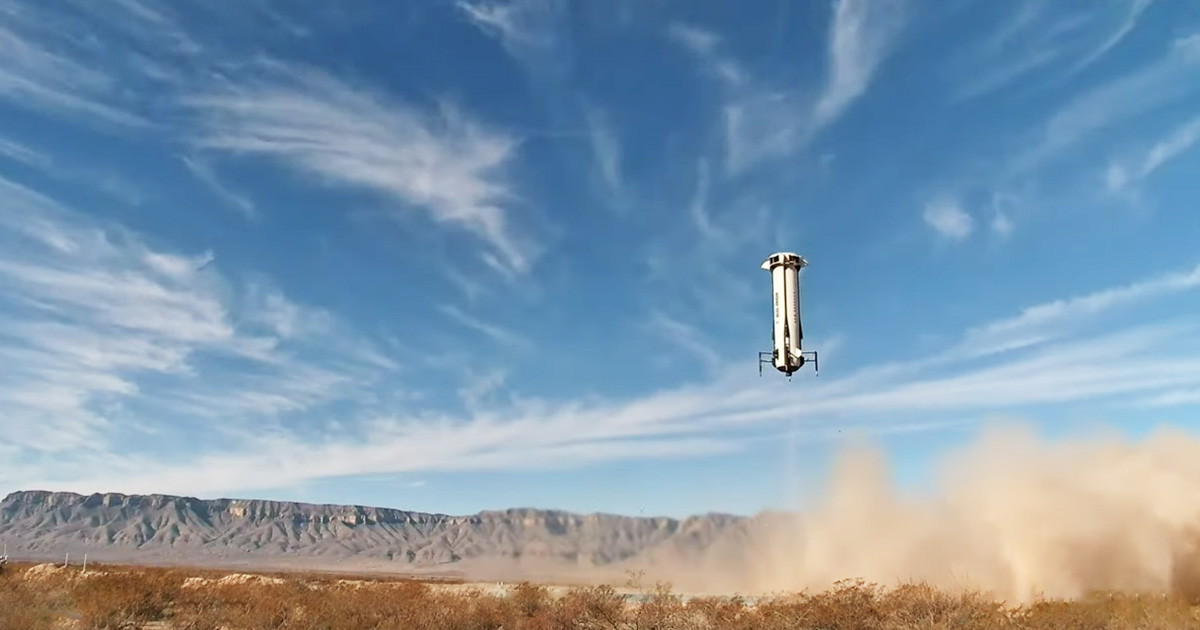Now Reading: Artemis II Gears Up with Integrated Testing Ahead of Launch
-
01
Artemis II Gears Up with Integrated Testing Ahead of Launch
Artemis II Gears Up with Integrated Testing Ahead of Launch

Quick Summary
- NASA teams at Kennedy Space Center are starting integrated tests for Artemis II, the frist crewed mission in the Artemis lunar exploration campaign.
- The mission involves a 10-day journey by four astronauts around the Moon and back, aiming to prepare systems for future missions to Mars.
- Tests will verify interoperability between rocket elements (SLS core stage, solid rocket boosters) and ground systems from NASA’s Launch control Center.
- Separate engineering tests will focus on each individual component of the rocket system, including propulsion stages and Orion spacecraft.
- Interaction interfaces between SLS/Orion systems and mission control at Johnson Space Center will undergo rigorous testing using multiple radio frequency antennas.
- Two launch day demonstrations with astronauts are planned: one in the Vehicle Assembly Building (VAB) for strapping-in practice, and another on emergency processes when at the launch pad.
- A critical flight termination system test is scheduled to ensure safety compliance during emergencies.
- Propellant loading rehearsals involving over 700,000 gallons of cryogenic fuel will simulate countdown procedures but will not involve crew participation.
Indian Opinion Analysis
The integrated testing phase of NASA’s Artemis II marks another ambitious step toward advancing human space exploration beyond Earth’s orbit. While India has made strides with it’s lunar programs like Chandrayaan missions, initiatives such as Artemis II serve as a benchmark of global collaboration in deep-space endeavors that could potentially benefit all space-faring nations with shared scientific advancements.
India could draw lessons from Artemis’ meticulous planning process-testing interoperability among spacecraft components before attempting manned flights is crucial to ensure reliability under extreme conditions. Additionally, this development emphasizes how multi-phase testing strategies amplify operational precision ahead of complex missions-a principle important for India’s own aspirations in manned lunar or interplanetary exploration.
By maintaining consistent innovations combined with collaborative frameworks globally through organizations like ISRO-NASA tie-ups or other multilateral engagements on technology exchange platforms such as BRICS or Quad initiatives-India might considerably elevate visibility alongside practicality during transformative outer-orbit explorance

























